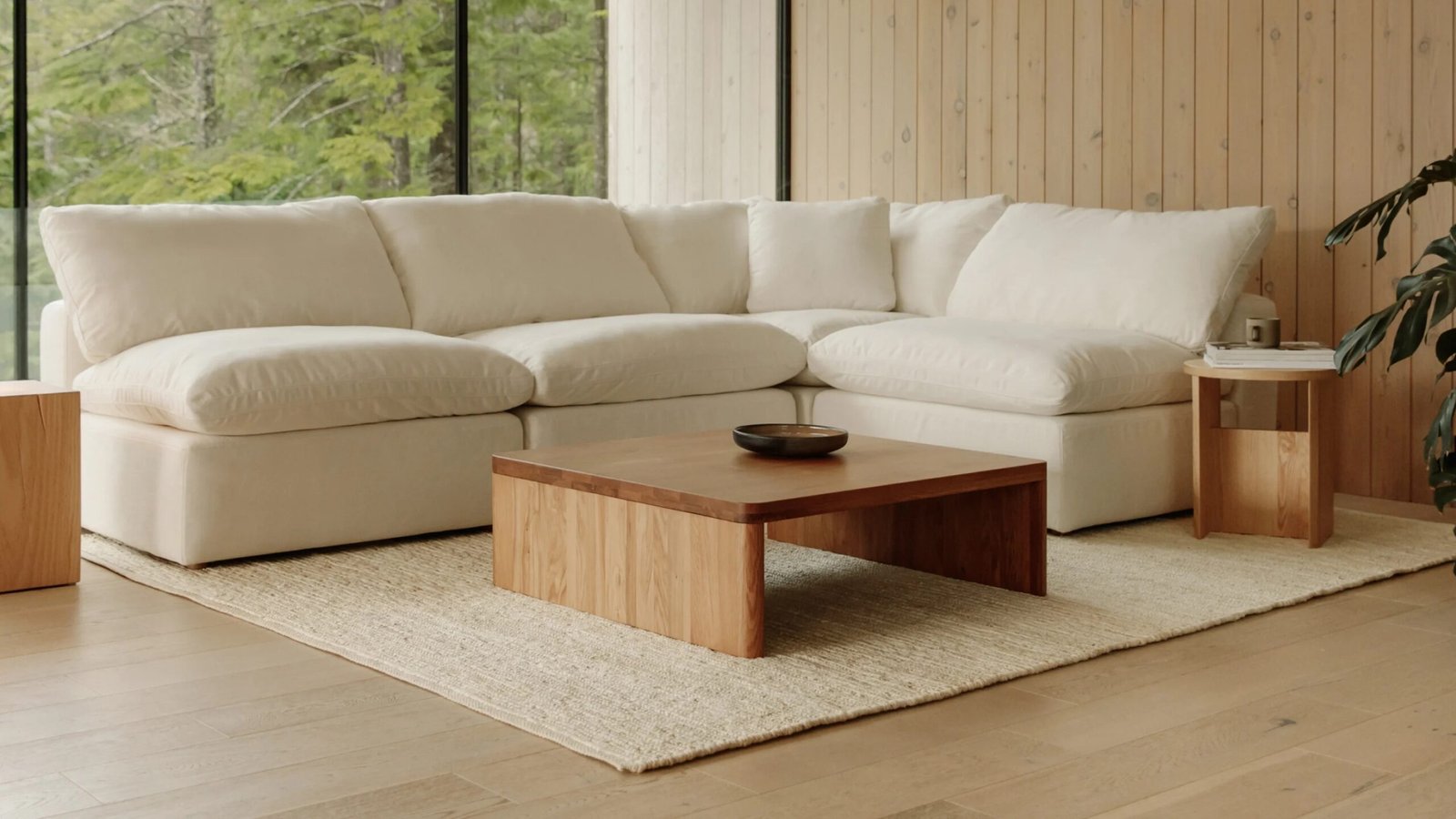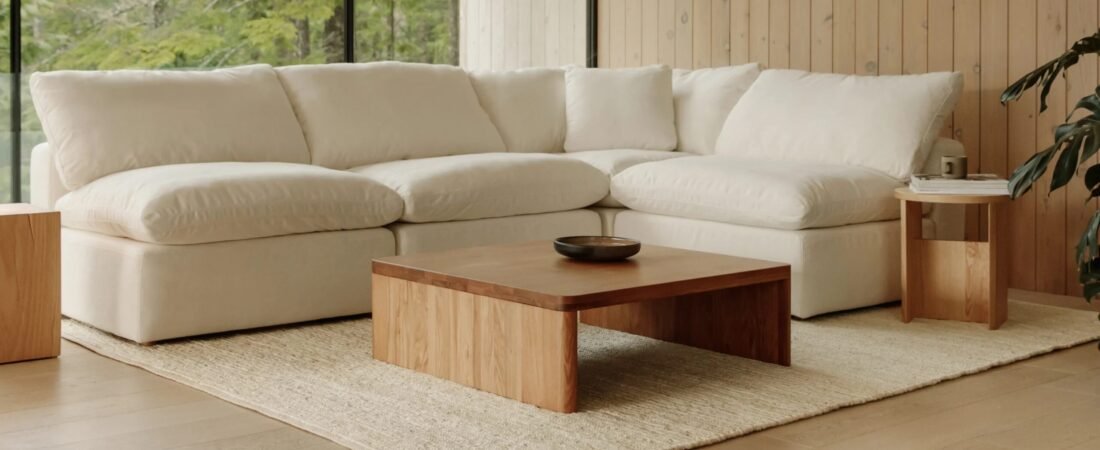The **modern living room design** of 2025 is increasingly defined by conscious consumption. Choosing **sustainable materials** demonstrates a commitment to both high design and environmental responsibility. This guide focuses on ethical, low-impact materials that are perfect for a chic and green space.
I. Ethically Sourced Core Materials
The largest elements in your living room should be sourced responsibly.
1. Reclaimed Wood and Natural Fibers
- Reclaimed Wood: Furniture and shelving made from salvaged wood (barnwood, factory beams) reduces demand for new timber and adds unique character.
- Bamboo and Cork: Excellent renewable resources for flooring and cabinetry. Bamboo grows rapidly, and cork is naturally harvested from the tree bark.
2. Low-VOC and Organic Textiles
- Low-VOC Paint: Volatile Organic Compounds (VOCs) are toxic gases emitted by standard paints. Choosing low-VOC or zero-VOC paint ensures better indoor air quality.
- Organic Textiles: Opt for certified organic cotton, linen, hemp, or recycled polyester for upholstery, drapes, and throws to minimize pesticide use and waste.
II. Investing in Longevity and Timelessness
The most sustainable choice is to buy less frequently. **Sustainable materials** are often those that last.
1. Buy It Once: Quality Over Trend
Choose high-quality, durable frames (solid wood, metal) that can be reupholstered rather than replaced. Timeless design ensures the piece won’t feel dated in a few years, reducing landfill waste.

Sustainability is one of the biggest trends shaping design in 2025. Explore how these materials fit into the overall aesthetic of your space: Modern Living Room Design Trends in 2025.





